
[221] Malva sylvestris, Mallow
Introduction
Malva sylvestris, (Common) Mallow, is a common and widespread wildflower that may be treated as a garden flower or as a weed. Malva moschata, Musk Mallow or Musk-mallow, is a similar, less common wildflower. These and others species of Malva are cultivated as garden plants.
The name Mallow is used for most species of Malva and for some others in the wider Malvaceae family
Malva sylvestris is also called High Mallow or Tall Mallow.
Taxonomy
Kingdom – Plants
Division – Vascular Plants
Class – Angiosperms (Flowering Plants)
Order – Malvales
Family – Malvaceae (Mallows)
Subfamily – Malvoideae
Genus – Malva
Scientific Name – Malva sylvestris, Malva moschata and others.
Several species of Malva are available for cultivation in several varieties.
The genus Malva includes all the species that were known until recently as Lavatera.
Name
If you have been following and learning from my blogs you should be anticipating the next two sentences.
Mallow comes from Old English from the Latin malva, which comes from Ancient Greek malakhe.
The English colour mauve is cognate and comes from the French word for Mallow.
You will recognise sylvestris as similar to sylvatica, which we met for [065] Large Bindweed and [142] Beech.
The brothers Johann Heinrich Lavater (1611-91) and Johann Jacob Lavater (1594-1636) were Swiss naturalists.
Mallow
Malva sylvestris is native to most of Europe and adjacent parts of Asia and Africa. It is a vigorous, fast growing wildflower found in fields, hedgerows, roadside verges and as a garden weed. It can be a biennial or perennial but it reappears locally after being cut down every year.
It grows quickly to a small bush. Its leaves are easily recognisable, lobed and dark green, sometimes with mauve veins, but turn to a duller green colour in late Summer.


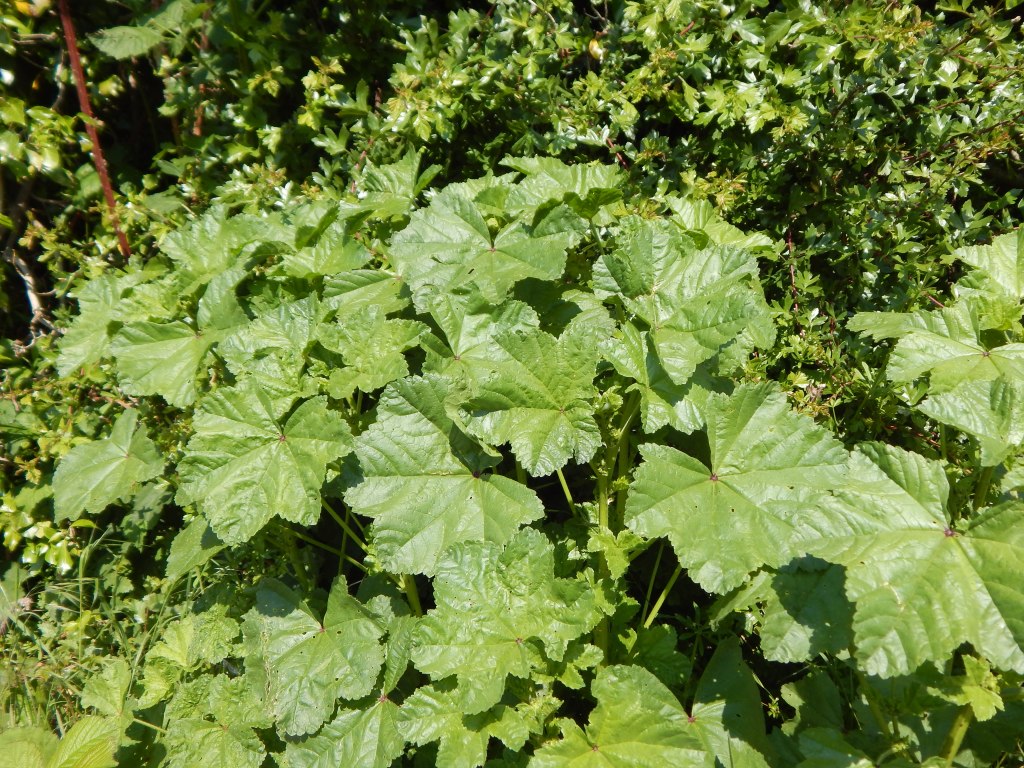
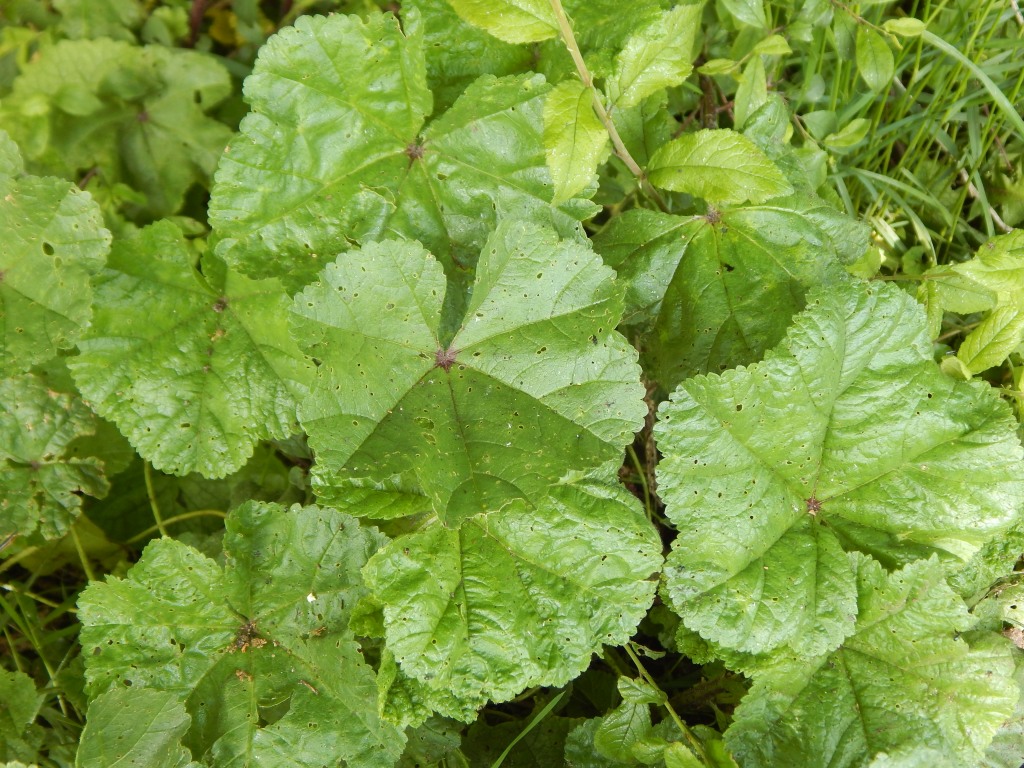


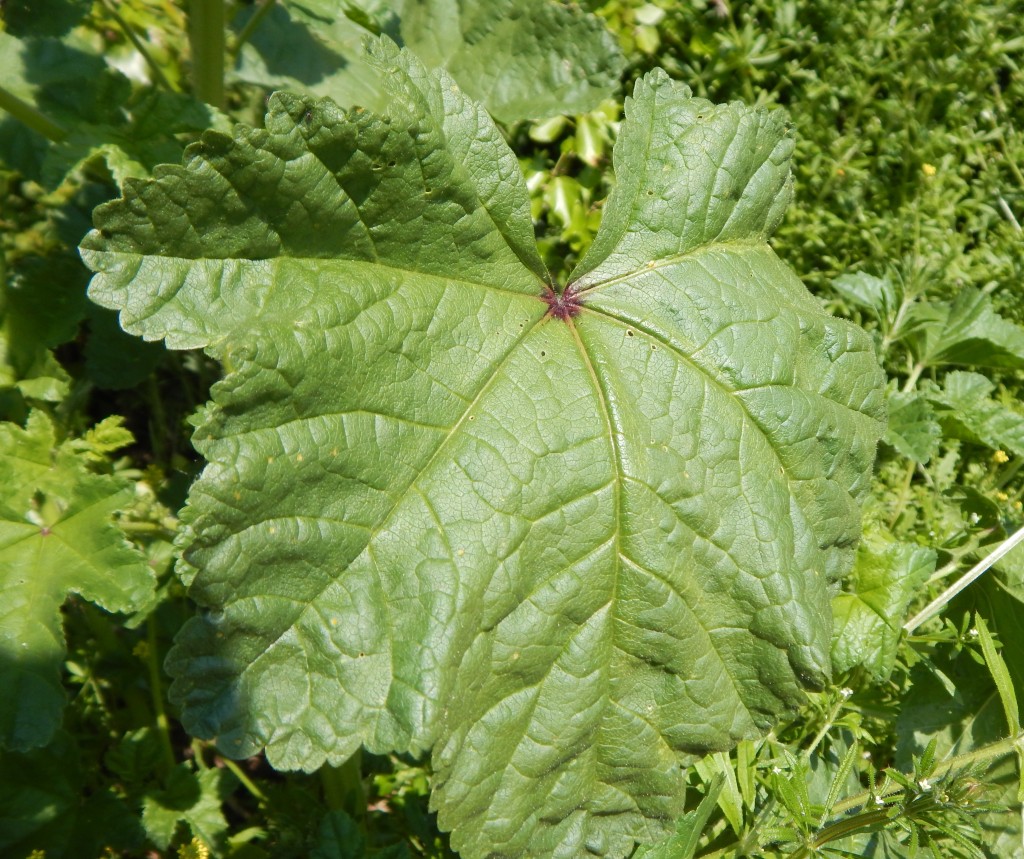
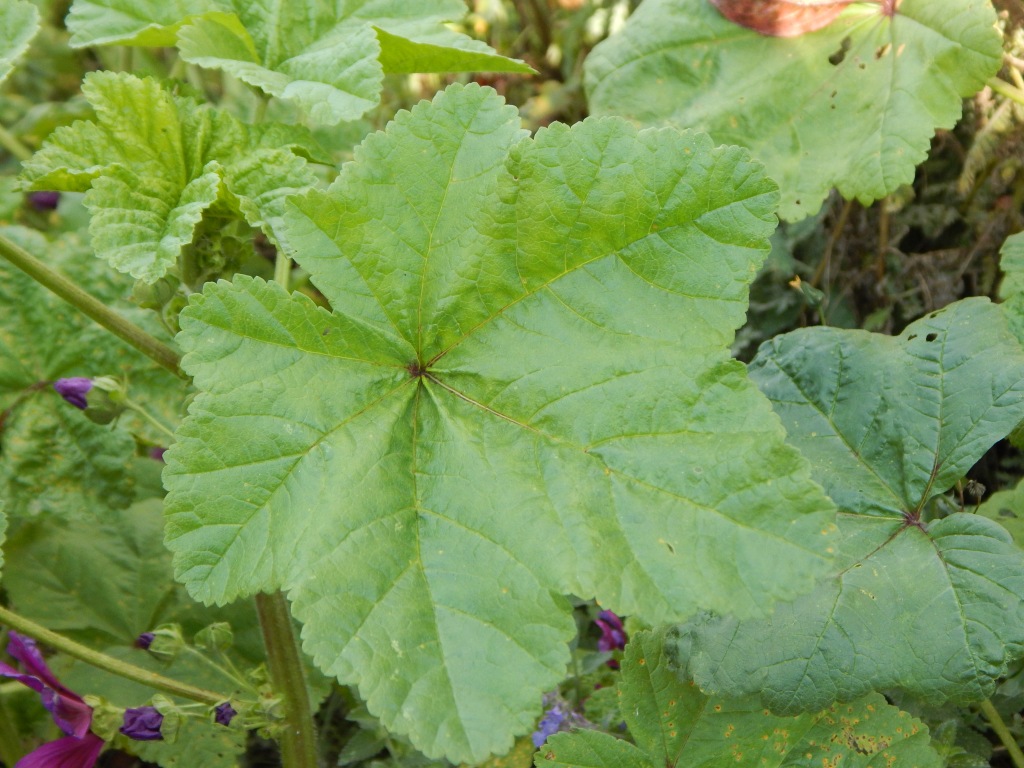

The flowers are from light pink-purple to darker purple. Each flower had five heart-shaped petals with a radial pattern of darker purple veins.

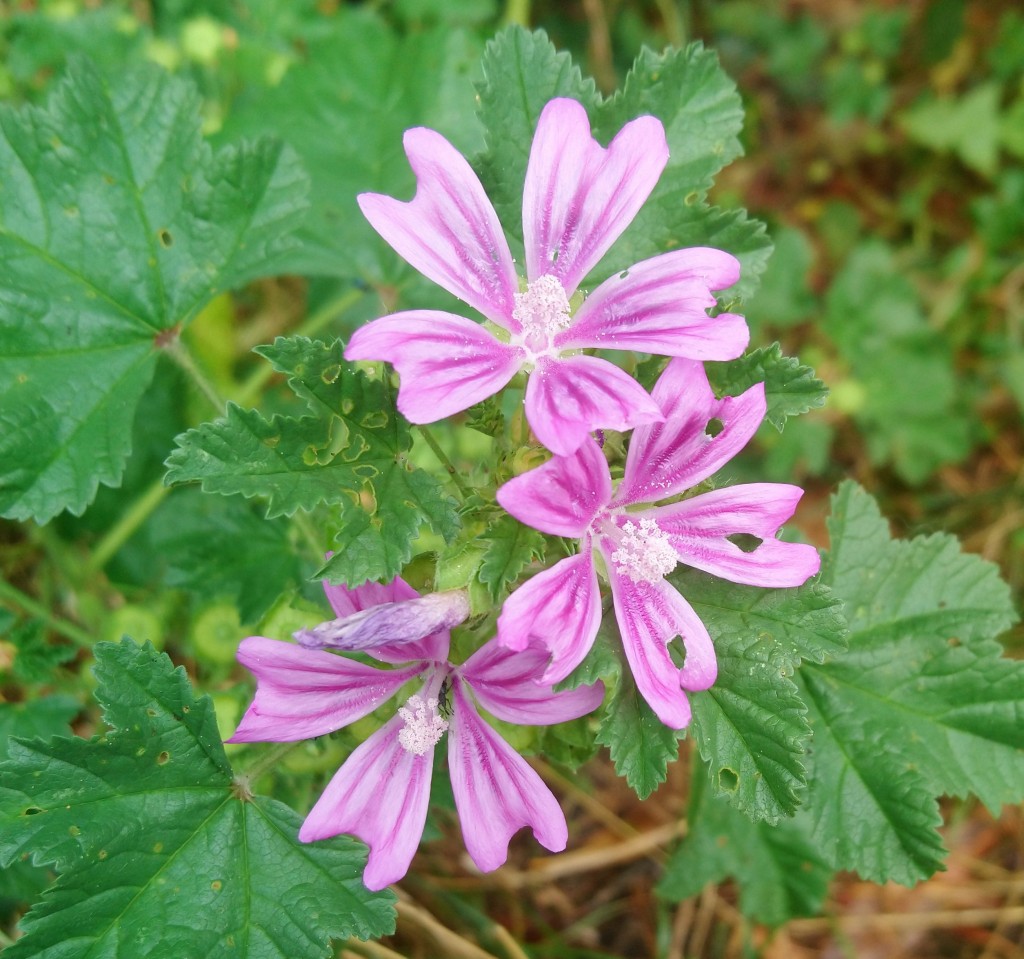


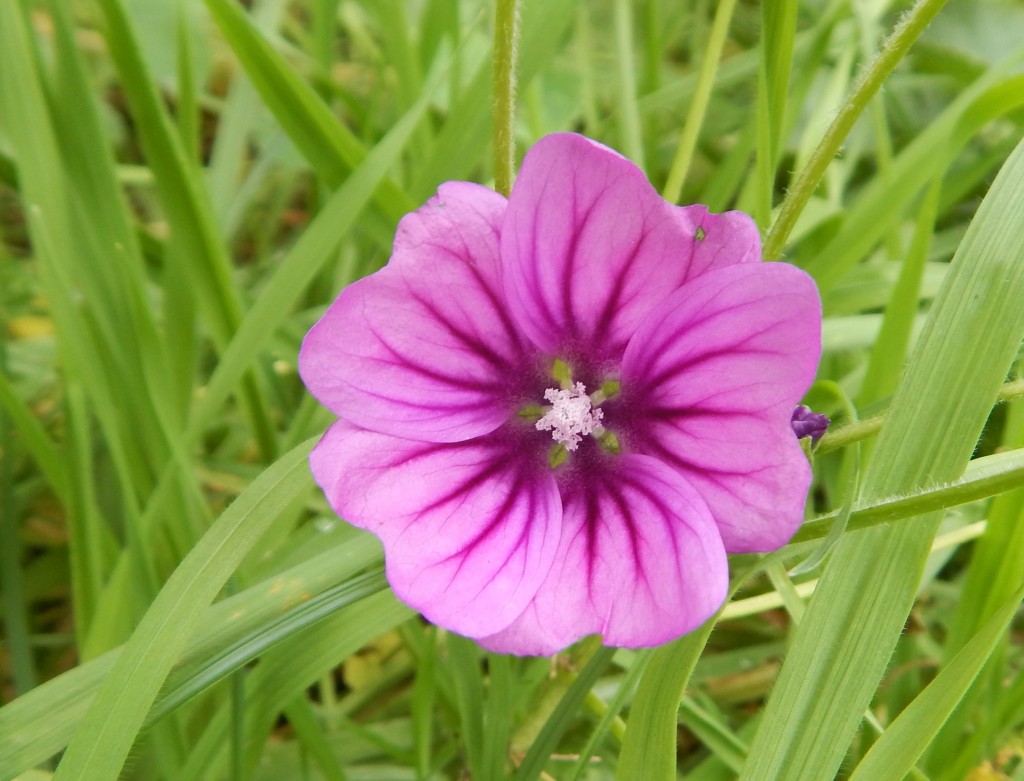


It has been used traditionally as a herbal medicine and its leaves can be eaten. It was largely replaced as a herb by the related Althaea officinales, Marsh-mallow (which is no longer used in the sweets called marshmallows.)
It is cultivated as a garden plant, with several cultivars.
Musk Mallow
Malva moschata is native to most of Europe and adjacent Asia. It’s a smaller, more low growing plant than Malva sylvestris and is much less common in the UK. I know I won’t have to remind you of [051] Muscovy Duck that shares the same species epithet.
The flowers are a very pale pink or mauve without the darker veins and with petals that tend to be oval rather than heart shaped.



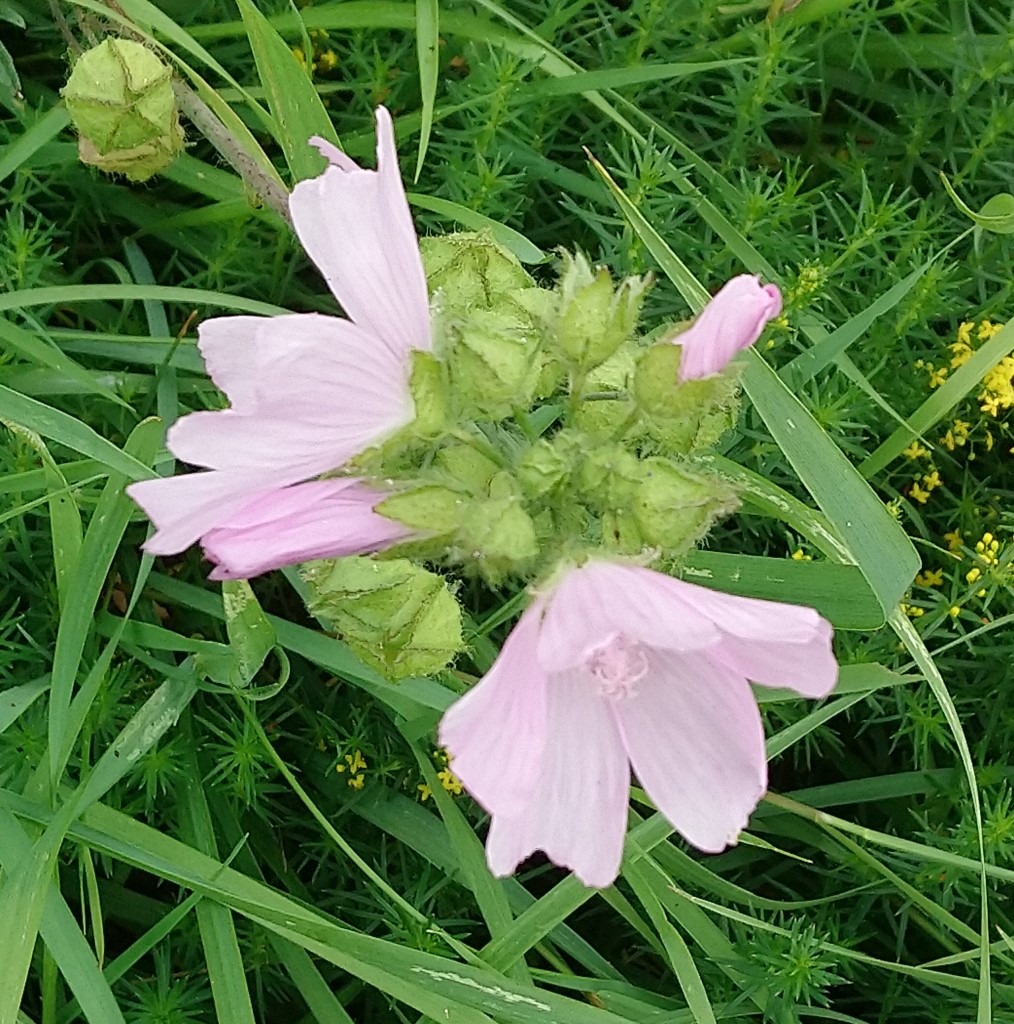


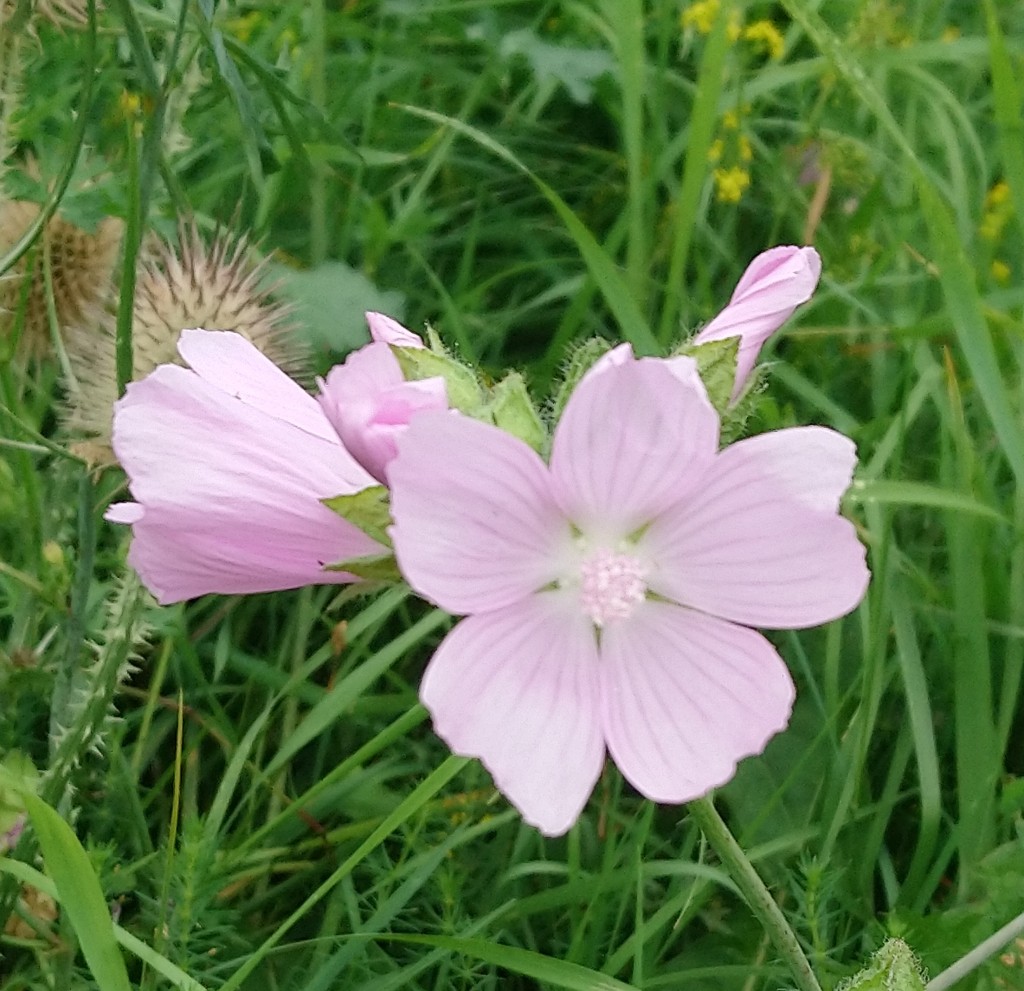
It is also grown as a garden plant and its flowers are supposed to have an attractive, musky scent.
Royal Mallow
Malva trimestris, previously known as Lavatera trimestris, also called Rose Mallow, Annual Mallow, Regal Mallow or Annual Tree Mallow, is native to the Mediterranean but may be cultivated as a garden plant. Several cultivars are available. It supposedly flowers for three months each year which explains the Latin tri-mestris.
Its flowers are more showy than Malva sylvestris and may appear almost circular.
I am not sure of some of the pictures shown earlier that are cultivated versions of either M sylvestris or M trimestris.
Tree Mallow
Malva arborea, previously Lavatera arborea and also known as Malva eriocalyx, is native to Western Europe including the UK, the Mediterranean and Northern Africa. It is found mainly in coastal areas and can tolerate some levels of salt water.
It is not really a tree but its robust stems up to two or three metres make it tree-like in comparison to other Malva species.
It is widely cultivated as a garden plant.
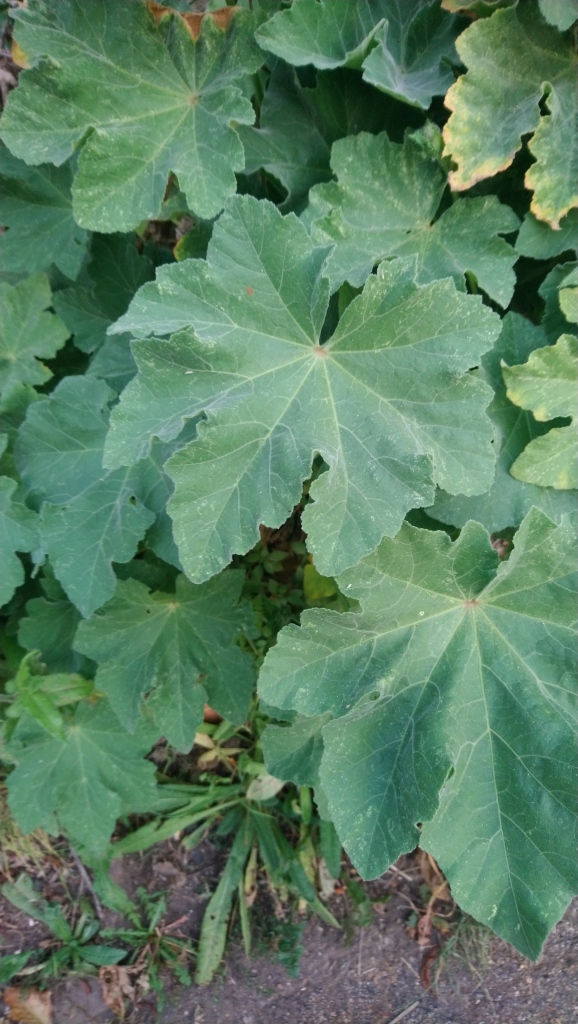
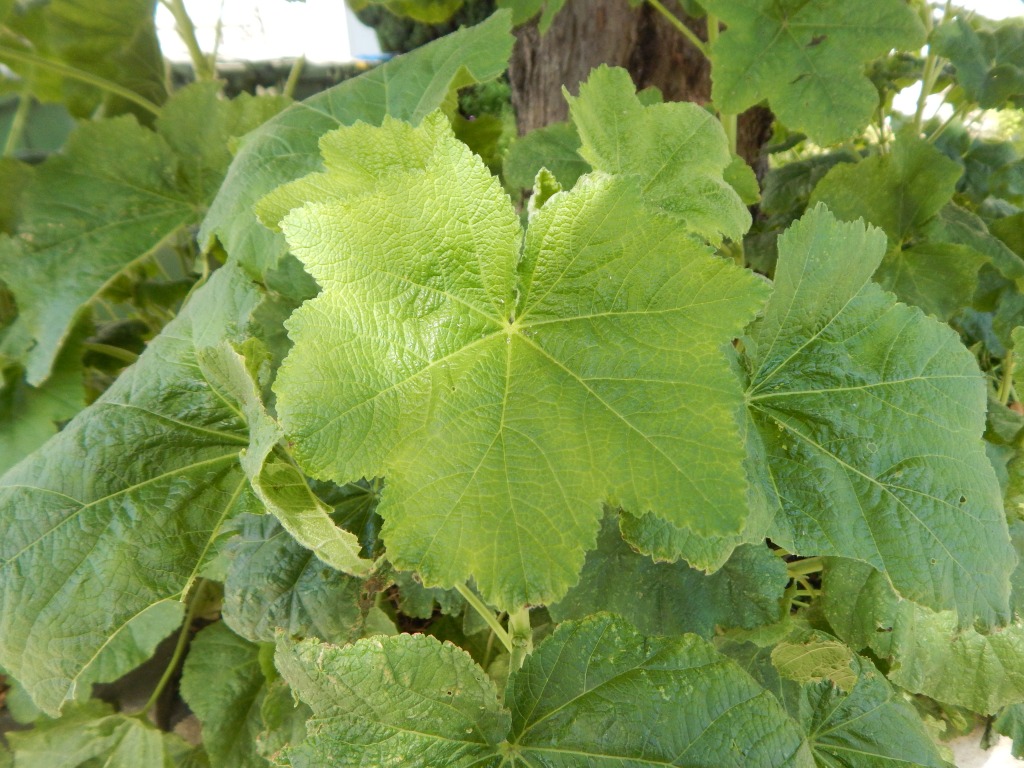
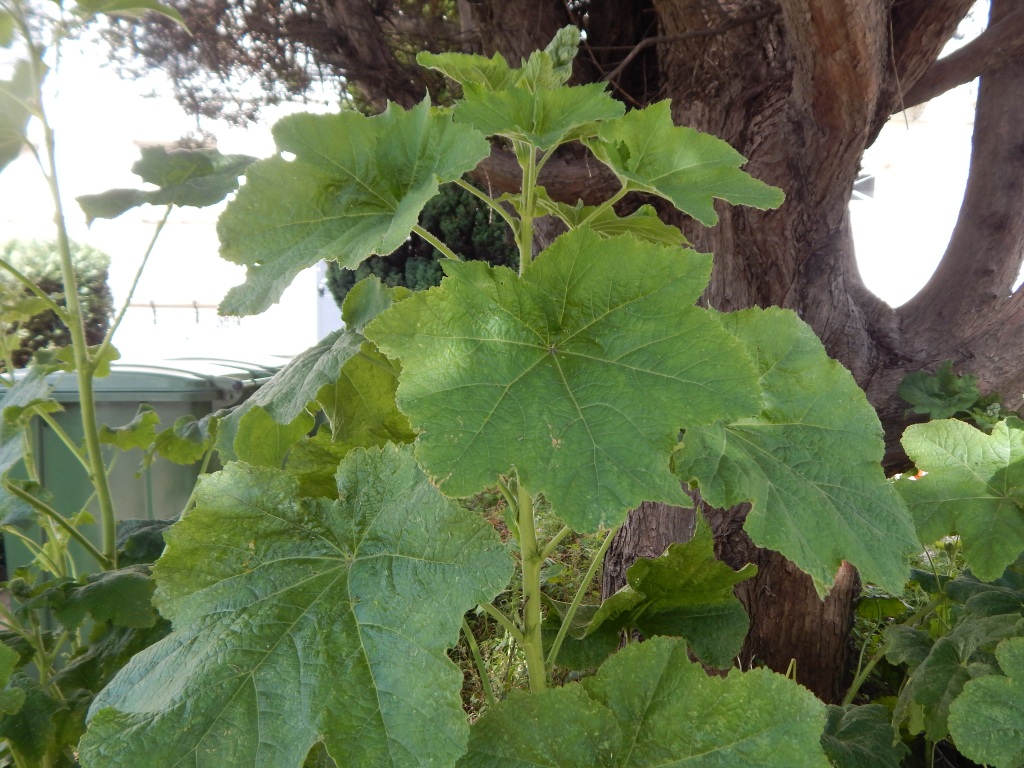
Other Notes
I see this as a very common weed and sometimes in gardens but I have to add my usual disclaimer. I can’t guarantee the exact species of my pictures.
See also
Mallow species are clearly related to [013] Hollyhock, and to the garden plant Hibiscus, which can also be called, confusingly, Rose Mallow.
